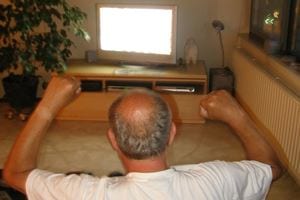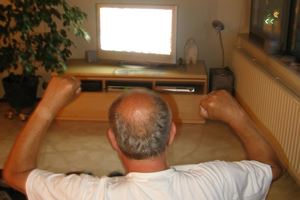Winter Fitness Tips for the Rest of Us Do you have family members, close friends…

The Hidden Health Risks of Inactivity
 A great deal of recent research has highlighted the health risks associated with inactivity, primarily as they relate to obesity, metabolic disorders and cardiovascular disease. This is why you’ve probably seen or heard the phrase “Sitting is the new smoking.” at some point over the past few years. But there are also health risks inactivity to your musculoskeletal system that haven’t generally received the same degree of media attention. In particular, there are several different ways in which inactivity, weight gain and the condition of your bones, muscles and joints can be related.
A great deal of recent research has highlighted the health risks associated with inactivity, primarily as they relate to obesity, metabolic disorders and cardiovascular disease. This is why you’ve probably seen or heard the phrase “Sitting is the new smoking.” at some point over the past few years. But there are also health risks inactivity to your musculoskeletal system that haven’t generally received the same degree of media attention. In particular, there are several different ways in which inactivity, weight gain and the condition of your bones, muscles and joints can be related.
The first thing to understand is that the chain of causality can actually run in a number of directions. Poor physical conditioning, injury, inactivity and weight gain can all be both causes and effects. For example:
- Musculoskeletal pain-especially discomfort in the back, neck, hips, shoulders, and extremity joints-can make even moderate activity difficult and strenuous activity (such as jogging, biking, or hiking) nearly impossible. This can lead to inactivity, deteriorating bone, muscle and joint health, and weight gain.
- Gaining unwanted weight makes it less likely that you will be physically active, weakening bones, muscles and joints and increasing the risk of exercise-related injury. Injury (of course) makes exercise even more difficult, raising the odds of putting on additional pounds.
- Sedentary lifestyle choices directly contribute to the likelihood of weight gain and exercise-related injuries. If one or both of these things happen, it can make exercise more difficult and less appealing. When exercise becomes more difficult and less appealing, physical activity typically decreases and bones, muscles and joints become weaker.
- Poor physical conditioning (distinct from injury) can discourage exercise, leading not only to continued inactivity but also to weight gain and an increased risk of injury.
So, as you can see, these four issues can be closely related, but they’re not necessarily connected in the same way in every case. What is clear, though, is that inactivity, obesity and poor physical conditioning all present real risks for the musculoskeletal system, which can in turn limit mobility and reduce quality of life.
Close-Up on the Inactivity-Obesity Connection
Many researchers have come to view persistent inactivity as a root cause of obesity. Analysis of National Health and Nutrition Examination Surveys from 1988 through 2010 found that 52% of women reported a sedentary lifestyle in 2010 compared to 19% in 1988. There was a similar jump in men: in 2010, 43% reported no physical activity compared to 11% in 1988. These findings coincide with an obesity rate that doubled between 1980 and 2010. However, a study published in the journal Mayo Clinic Proceedings also demonstrated that obesity can be a cause as well as a result of inactivity. On average, people who become obese engage in less than one minute of vigorous activity per day. So it becomes a sort of feedback loop-inactivity leads to obesity, which leads to more inactivity.
Breaking the Cycle
If you are physically inactive and overweight but otherwise healthy, you can break the cycle by changing your day-to-day exercise and nutritional habits. Your chiropractic physician can help you do this in a way that’s safe and effective. But what if acute or chronic pain is preventing you from getting the exercise your body needs? If this is the case, then your chiropractor can work with you to find the root cause of your discomfort and can recommend a treatment plan to address it. This will help put you in a better position to comfortably begin exercising.
As a result of their training, most chiropractors take a holistic view of their patients’ health. This is why conversations about healthy lifestyle habits (not just about symptoms and treatment options) feature so prominently in our relationships with patients. Put simply, it is impossible to maintain or improve your health over the long run if your own day-to-day behaviors are working against you. Office visits just won’t be enough. Good communication is a key part of any effective treatment plan. Talking candidly about your diet, exercise, sleep, work and stress management patterns helps us understand you as person-not just your symptoms. In return, you’ll receive advice that can help you better manage your overall health and protect your musculoskeletal system.
Between pain relief, rehabilitation and positive lifestyle changes, chiropractic care provides the tools you need to break the vicious cycle of inactivity that becomes health risks, weight gain and musculoskeletal pain-no matter where the cycle first started. Call or visit our office today to learn more!




